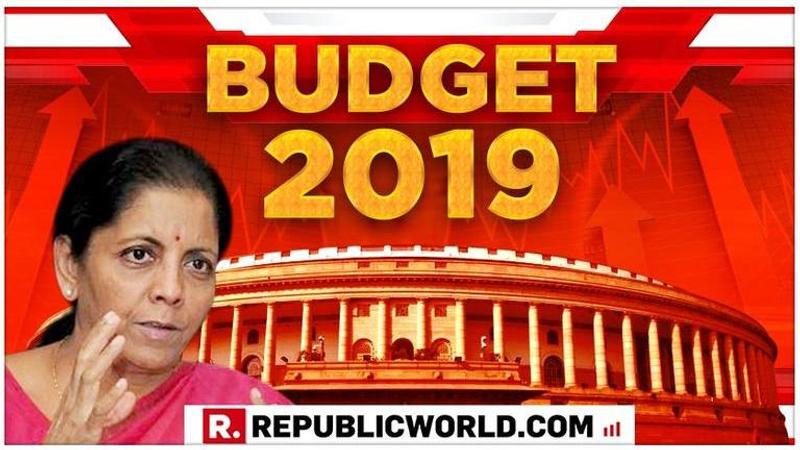Published 09:42 IST, July 5th 2019
Union Budget 2019 | SCOOP: Modi government aims for 8% growth; Fiscal stimulus, labour reforms, massive infra push and more in store in Nirmala Sitharaman's maiden budget
Finance Minister Nirmala Sitharaman will be presenting the maiden Union Budget of Modi 2.0 government on Friday, in which she is likely to kickstart the implementation of the blueprint to achieve PM Modi's goal of turning India into a $5 trillion economy.

Finance Minister Nirmala Sitharaman will be presenting the maiden Union Budget of Modi 2.0 government on Friday, in which she is likely to kickstart the implementation of the blueprint to achieve PM Modi's goal of turning India into a $5 trillion economy.
This will be the 89th Union budget, which is the financial statement of the government, detailing its revenue and expenditure in the past, as well as estimated spending and projections for the coming year.
While the expectations of the common man with the Union Budget high, Republic Media Network sources have accessed details of what may be announced in the Finance Minister's speech.
Here's what we can expect from Nirmala Sitharaman's maiden Budget speech:
- The government may opt for a fiscal stimulus to kickstart the economy, taking into account that it may entail some degree of fiscal slippage.
- The labour reforms on the agenda might introduce a sunset clause on labour size for the MSME sector. The Finance Minister might move towards incentivising larger companies and discouraging labour unions amid at increasing productivity of labour and capital.
- Growth to be pegged at 8% of GDP over the next five years.
- PM-KISAN to be the driver of rural growth
- Massive infrastructure push in store
- Up to Rs 10,000 crores likely for newly established Jal Shakti Ministry.
- Increased National Rural Employment Guarantee Act 2005 (MNREGA) allocation for Water Conservation projects in Panchayats.
- Measures to increase lending to Private Sector
- SOPs to the middle class, increased tax incentives for NPS, more measures to increase savings, might tinker with the tax exemptions, tax (EET) nature of certain investments and savings schemes, the likelihood of changes in home loan interest and principal exemption limits as also a super-rich tax.
- On the corporate side, the Finance Minister might announce further tapering of corporate tax and grandfathering of certain tax incentives, plus the use of IBC for further cleansing of the system
- Finance Minister might make extra provisions for increasing Judicial Officers across the country aimed at clearing backlog in courts that will affect the overall governance efficiency.
Article 112 of the Indian Constitution defines the Union Budget as the annual financial statement of the estimated receipts and expenditure of the government for that particular year. The Budget accounts the finances of the government for the fiscal year which starts from April 1 and ends on March 31 next year. It is the most detailed report on the financial plan of the country, focusing on the expenditure and revenue to be made by the government during the fiscal year.
The budget determines how the money will be handled by the government. In a nutshell, it is a statement of income and expenditure of the government.
The Union Budget is expected to boost spending at the cost of short-term slippage in fiscal deficit targets as Finance Minister Nirmala Sitharaman lays down the Modi 2.0 government's road map for the economy and the nation in the next five years, with boosting investments, particularly private investment, and giving an impetus to manufacturing being the prime focus. There are high expectations over relief to the common man with the rise in personal income tax threshold for certain categories while at the same time, upping spending on agriculture, healthcare and social sectors. Also, there is expected to be a big push for infrastructure spending including on roads and railways to drive growth which had slowed to a five-year low of 5.8 per cent in the first three months of 2019.
Updated 09:51 IST, July 5th 2019




